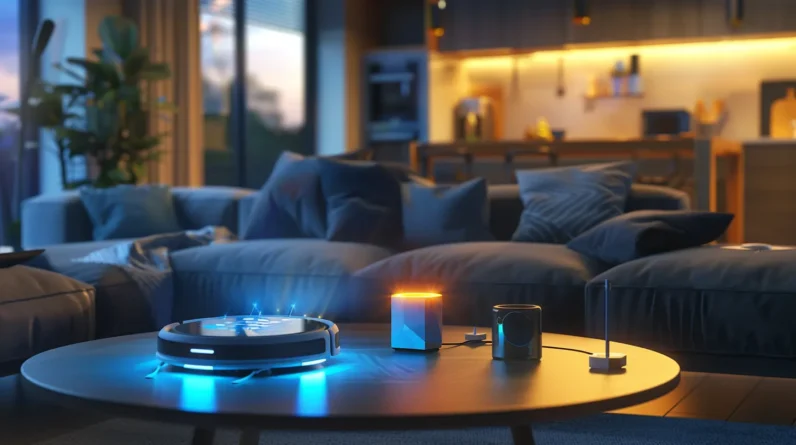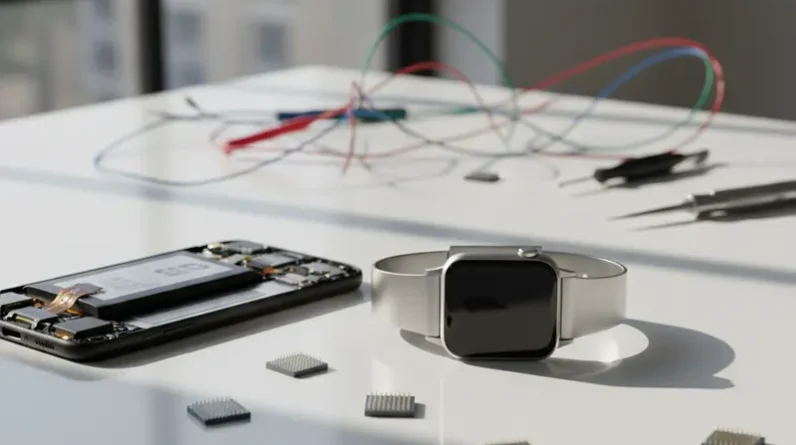
AI transforms our smart homes into intelligent ecosystems that learn, adapt, and anticipate our needs. We’re seeing AI algorithms analyze real-time data from connected devices to optimize energy usage, enhance security through facial recognition, and enable sophisticated voice control features. The technology powers predictive maintenance systems that prevent device failures and coordinates diverse smart devices into a seamless network. Through machine learning and neural networks, our homes now offer personalized comfort settings while reducing energy consumption by up to 70%. The integration of AI continues to reveal new possibilities in home automation and management.
Smart Security and Threat Detection
While traditional security systems rely on simple motion sensors and cameras, modern AI-powered security solutions analyze multiple data streams in real-time to detect potential threats. We’re seeing AI algorithms that can distinguish between normal household activities and suspicious behavior, reducing false alarms by up to 95%.
These systems integrate facial recognition, behavioral analysis, and anomaly detection to identify unauthorized access attempts. We can now receive instant notifications when AI detects unusual patterns, such as someone lingering too long at our doorstep or attempting to access windows during off-hours. The technology also cross-references detected faces with authorized user databases and can track multiple subjects simultaneously across different camera feeds. When combined with smart locks and automated emergency responses, AI-driven security provides an all-encompassing, proactive defense against home intrusions.
Voice Control System Evolution
Through rapid technological advancement, voice control systems have evolved from basic command recognition to sophisticated AI-powered digital assistants. We’ve witnessed transformation from simple speech-to-text conversion to context-aware systems that understand natural language processing and user intent.
– Feel empowered as your voice assistant learns your preferences and routines
– Experience the satisfaction of hands-free control across your entire home
– Trust in the system’s ability to understand regional accents and dialects
– Enjoy the convenience of multi-language support and real-time translation
– Marvel at the seamless integration with third-party smart devices
Today’s voice control systems leverage machine learning algorithms to continuously improve accuracy and response time. We’re seeing enhanced capabilities in speech pattern recognition, emotional tone detection, and personalized user profiles. These systems now support complex command chains, enabling us to create custom automation sequences and conditional responses based on time, location, and environmental factors.
Predictive Maintenance and Monitoring
Modern predictive maintenance systems utilize three core AI technologies – machine learning algorithms, sensor arrays, and real-time data analytics – to detect potential device failures before they occur. We’re seeing these systems continuously monitor device performance metrics, from power consumption patterns to operational temperatures, creating detailed performance baselines for each connected device.
When a smart device begins showing subtle deviations from its established baseline, AI algorithms flag these anomalies and trigger preventive actions. We’ve found that this proactive approach reduces device downtime by up to 70% and extends equipment lifespan considerably. For example, when a smart thermostat’s fan motor exhibits unusual vibration patterns, the system can alert homeowners to schedule maintenance before complete failure occurs. These predictive capabilities are now extending to water heaters, HVAC systems, and other critical home infrastructure.
Personalized Comfort and Automation
Smart homes are rapidly evolving beyond basic automation to deliver AI-driven personalized comfort experiences. We’re now seeing AI systems that learn our daily routines, preferences, and behaviors to create seamlessly automated environments that adapt to our needs.
– Our homes anticipate when we’ll wake up, adjusting temperature and lighting before we start our day
– Smart sensors detect our presence in different rooms, automatically optimizing comfort levels
– AI algorithms learn our preferred entertainment choices, cueing up personalized content across devices
– Intelligent climate systems balance energy efficiency with individual comfort preferences
– Voice-activated assistants evolve to recognize emotional states and respond accordingly
These AI-powered automation systems continually refine their understanding of our habits through machine learning, creating micro-adjustments that enhance our living spaces. We’re moving toward environments that don’t just respond to commands but proactively adapt to our lifestyles.
Connected Device Orchestration
Effective AI-powered homes bring together diverse connected devices into a unified, intelligent ecosystem. Through device orchestration, we’re seeing AI systems coordinate multiple smart devices to work in harmony, responding to our behaviors and environmental conditions simultaneously.
We’ve found that modern orchestration platforms use machine learning algorithms to analyze data from various connected devices, enabling them to make intelligent decisions about device interactions. For example, when we leave a room, the AI can coordinate the lights, thermostat, and entertainment system to power down in a specific sequence. The system’s neural networks continuously learn from these device interactions, optimizing their coordination patterns over time. This orchestrated approach eliminates the need for multiple separate apps or controls, creating a seamless, synchronized smart home experience that anticipates and responds to our needs.
Conclusion
Like a conductor leading an orchestra, AI harmoniously directs our smart home ecosystems, transforming houses into responsive, efficient living spaces. We’ve explored how AI manages energy, enhances security, evolves voice control, predicts maintenance needs, and personalizes comfort. As we integrate more connected devices, AI’s role will only deepen, continuously learning and adapting to create smarter, more sustainable, and intuitive home environments for tomorrow’s technological landscape.







